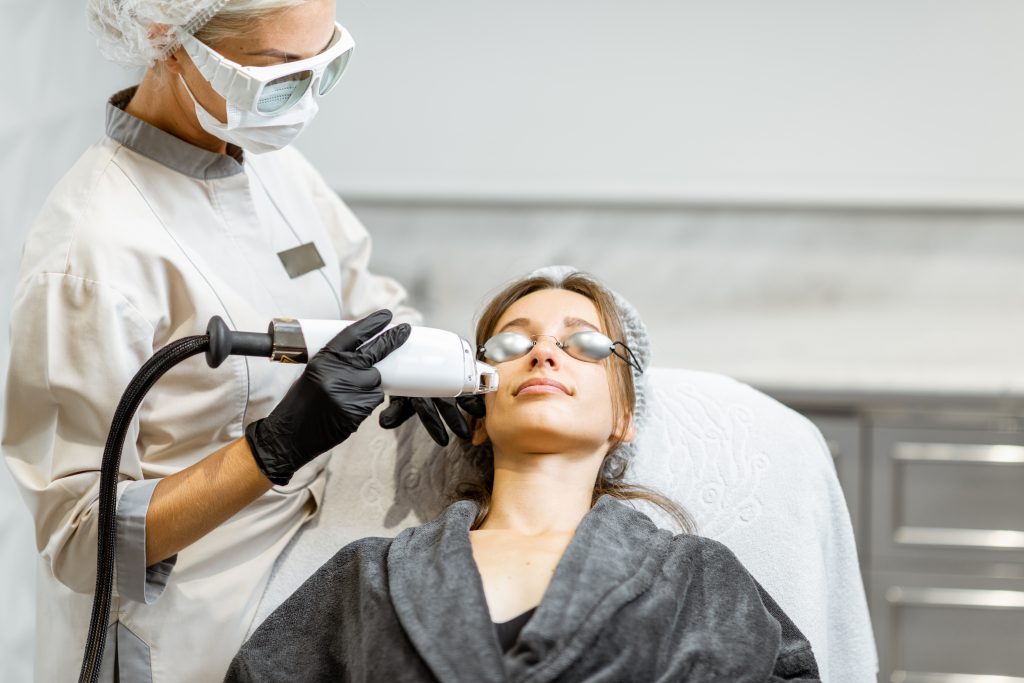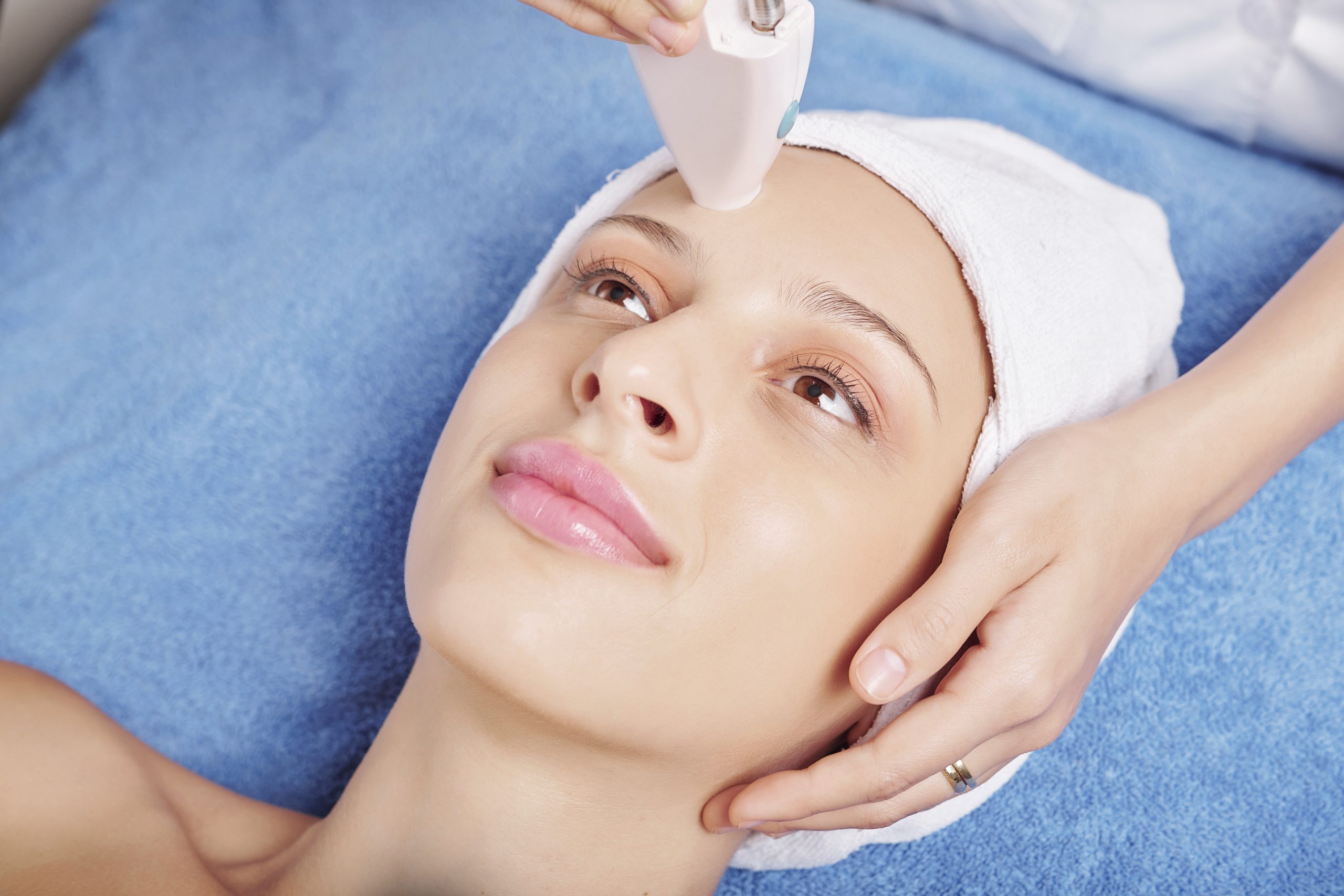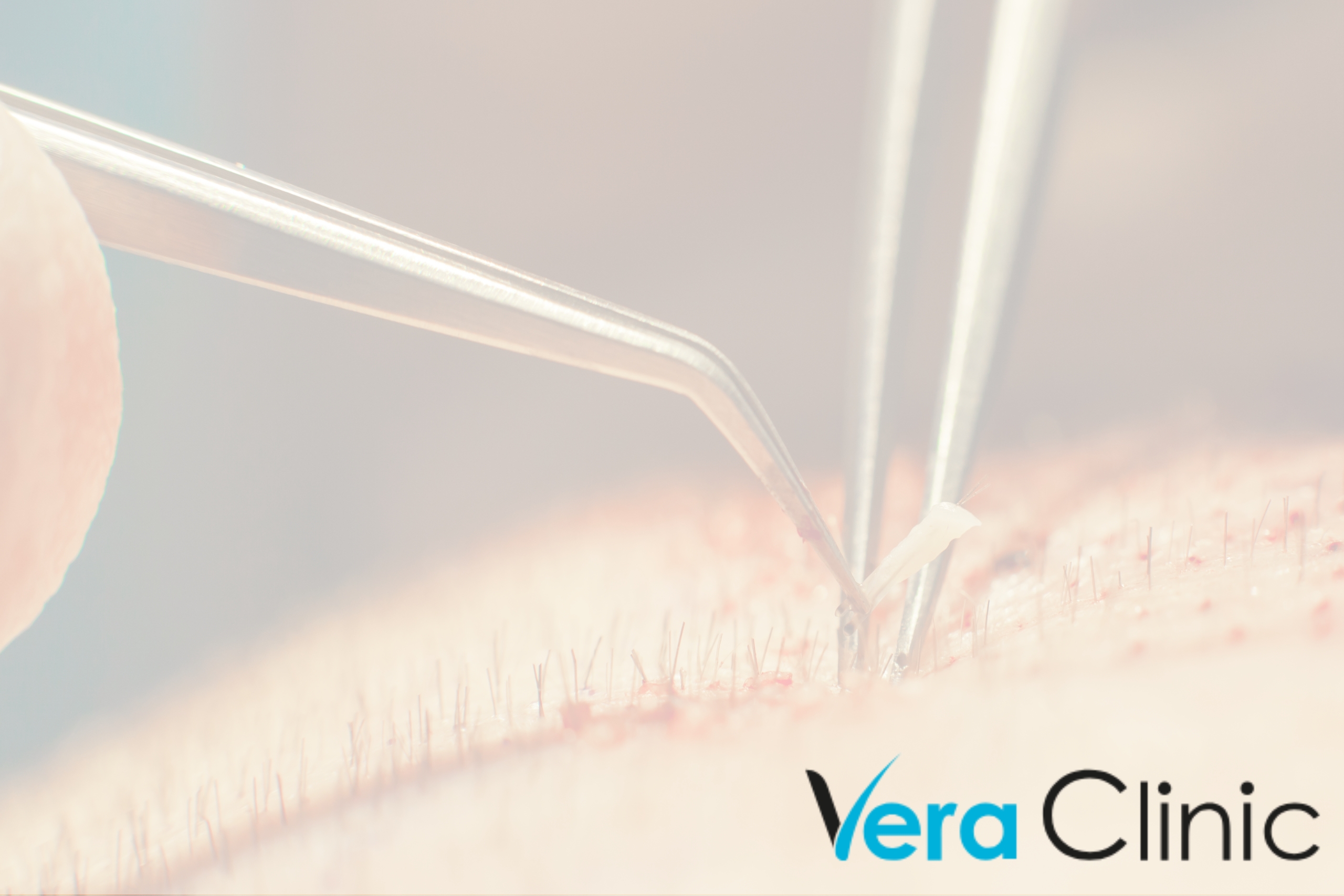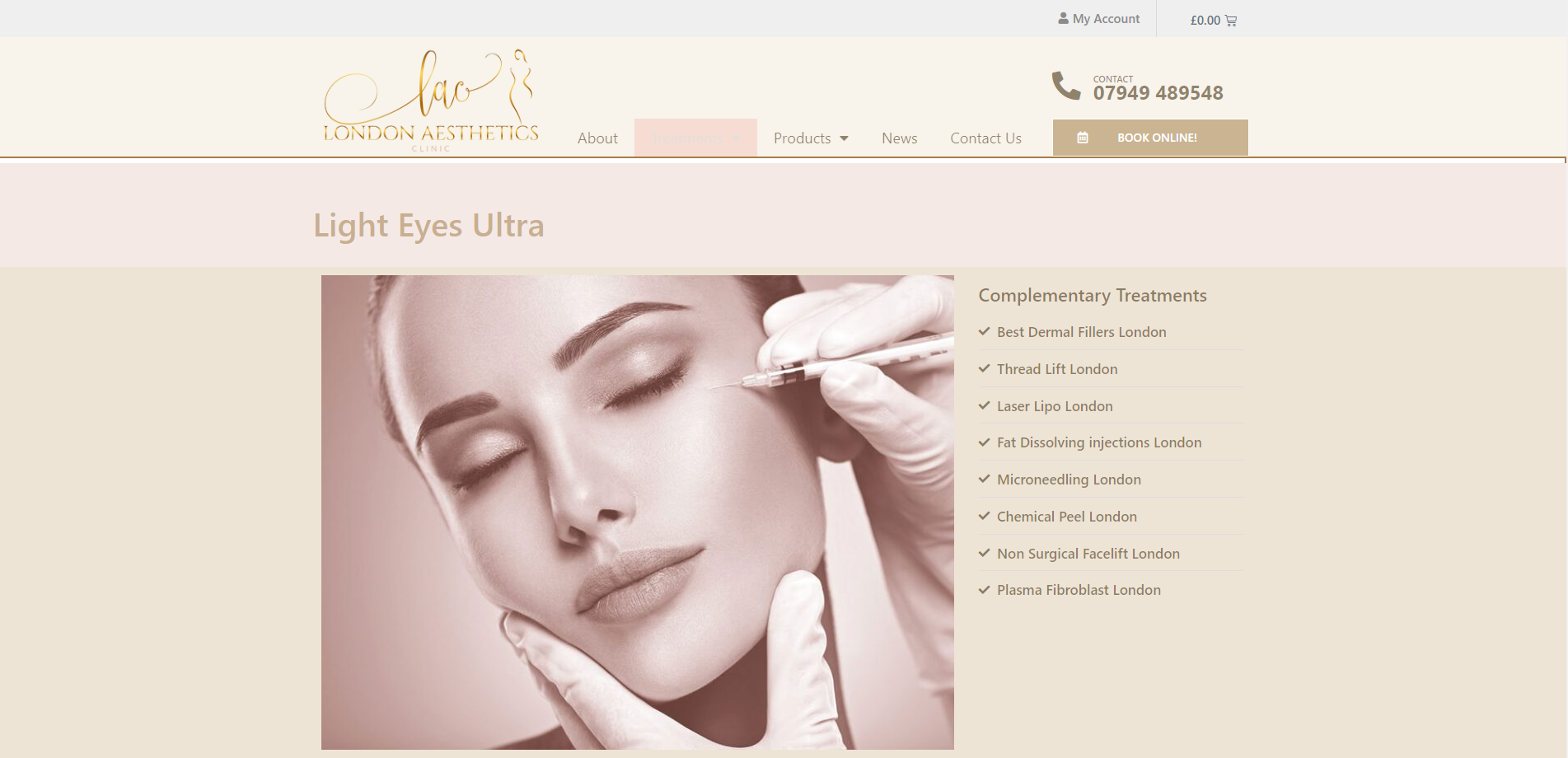Acne scars can be a constant reminder of our past struggles with acne. They can affect our self-confidence and make us feel insecure about our appearance. But what if there was a way to say goodbye to those pesky acne scars once and for all?
Acne is a common skin condition that affects millions of people worldwide. While acne itself can be frustrating to deal with, the aftermath of acne scars can be even more challenging. Over the years, various treatments have been developed to help fade or eliminate acne scars, with laser treatment emerging as one of the most effective options.
Laser treatment for acne scars has gained popularity due to its ability to significantly improve the appearance of scars and restore smooth, clear skin. If you’ve been struggling with acne scars and are looking for a solution that actually works, laser treatment may be the answer you’ve been searching for. In this article, we will explore the benefits of laser treatment for acne scars and why it has become a go-to option for many individuals seeking scar-free skin.
What are Acne Scars?
Acne is a common skin condition that affects many people, especially during their teenage years. While acne breakouts can be frustrating, the aftermath of acne scars can also take a toll on one’s self-esteem. Acne scars are the result of the skin’s natural healing process after an acne breakout. These scars can vary in appearance and severity, ranging from atrophic scars (depressed or pitted scars) to hypertrophic scars (raised scars).
They often occur when the body produces too much collagen or not enough collagen during the healing process, leading to the formation of scar tissue. Acne scars can affect people of all skin types and can be challenging to treat. However, with advancements in cosmetic treatments, laser therapy has emerged as an effective option for reducing the appearance of acne scars and achieving smoother, more radiant skin.
The Benefits of Laser Treatment for Acne Scars
Laser treatment is an effective and safe option for reducing the appearance of acne scars. This innovative procedure promotes the production of collagen, a vital protein that helps to heal and rejuvenate the skin.
Laser therapy works by delivering concentrated laser light to the affected area, targeting scar tissue and stimulating the natural healing process. By promoting collagen growth, laser treatment helps to rebuild the skin’s structure, resulting in smoother and more radiant skin.
In addition to promoting collagen production, laser treatment destroys acne-causing bacteria, reduces redness and inflammation, and improves skin texture and tone. It targets the deep layers of the skin, effortlessly removing dead skin cells and promoting the regeneration of new ones.
Another advantage of laser treatment is that it is a non-invasive procedure, meaning there is no need for surgical procedures or harsh chemical peels. It is also relatively fast and efficient, with minimal recovery time compared to other acne scar treatment options.
Laser treatment for acne scars offers individuals the confidence to embrace beautiful, smooth, and scar-free skin. With advanced lasers and technology, this innovative procedure has become an excellent option for those seeking to say goodbye to acne scars and restore their skin’s natural beauty. So why wait? Experience the transformative power of laser treatment today.
Types of Acne Scars
Acne scars come in various forms, each requiring a specific approach for effective treatment. The three most common types of acne scars are atrophic scars, hypertrophic scars, and keloid scars.
Atrophic scars are characterized by depressed areas on the skin, which can be further categorized into ice pick, boxcar, and rolling scars. Ice pick scars appear as small, deep pits on the skin’s surface. Boxcar scars are wider and have defined edges, resembling chickenpox scars. Rolling scars create a wavy texture on the skin.
Hypertrophic scars are raised and thickened scars that occur when the body produces excess collagen during the healing process. They develop above the skin’s surface and can be pink or red in color.
Keloid scars are similar to hypertrophic scars but extend beyond the original site of the acne injury. These scars are raised, thick, and often itch or cause discomfort.
Understanding the type of acne scars one has is crucial in determining the most suitable treatment option. Fortunately, laser treatment can effectively address all types of acne scars by targeting scar tissue, promoting collagen production, and improving the skin’s texture and appearance. With the help of advanced laser technology, individuals can bid farewell to acne scars and regain smoother, more radiant skin.
Atrophic Scars
Atrophic scars are a common type of scar that can develop as a result of acne scarring. They are characterized by depressed areas on the skin and can be further categorized into three main types: rolling scars, ice pick scars, and boxcar scars.
Rolling scars create a wavy texture on the skin, giving it an uneven appearance. These scars are characterized by shallow and broad depressions on the skin’s surface. They often give the skin a rolling or undulating appearance, hence the name. Rolling scars are caused by the movement of scar tissue below the surface of the skin.
Ice pick scars, as the name suggests, appear as small, deep pits on the skin’s surface. They are narrower and deeper than other types of atrophic scars. Ice pick scars are often distinguishable by their narrow and sharply-defined edges. These scars are caused by the destruction of collagen below the skin’s surface.
Boxcar scars, on the other hand, are wider and have more defined edges, similar to chickenpox scars. They are characterized by shallow to medium-depth depressions with sharp and vertical edges. Boxcar scars can be round or oval in shape and can vary in size.
Each type of atrophic scar has its own unique characteristics and appearance. Understanding these different types can help in identifying the most suitable treatment options for acne scarring. Whether it’s rolling scars, ice pick scars, or boxcar scars, addressing these atrophic scars can help achieve smoother and more even-looking skin.
Hypertrophic or Keloid Scars
Hypertrophic and keloid scars are two types of scars that have a raised, bumpy texture. These scars occur when there is an excessive production of collagen during the healing process.
Hypertrophic scars are typically raised and red in color. They can develop after any type of injury to the skin, such as burns, cuts, or surgical incisions. These scars are confined to the boundaries of the original wound and do not exceed the area of the injury.
Keloid scars, on the other hand, can extend beyond the boundaries of the original wound. They often have a raised, thickened texture and can be itchy or painful. Keloid scars can occur after any type of skin injury, including surgical procedures, piercings, or even acne.
Treating hypertrophic and keloid scars can be challenging due to their thickness. However, there are effective treatments available. One option is the use of advanced laser technology. Laser treatments can penetrate the deep layers of the skin, targeting the excessive collagen and stimulating the production of new collagen. This can help to flatten and soften the appearance of hypertrophic and keloid scars.
Other treatment options for these types of scars include steroid injections, silicone gel sheets, and surgical procedures. These treatments aim to reduce the thickness of the scar tissue and promote a smoother, more even skin texture.
Brown Spots & Stretch Marks from Acne Breakouts
Acne breakouts can leave behind more than just the pesky pimples. They can also result in brown spots and stretch marks, adding to the frustration of dealing with acne.
Brown spots, also known as post-inflammatory hyperpigmentation, occur when the skin produces excessive melanin in response to inflammation. When acne heals, it can leave behind these dark spots, making the skin appear uneven in tone.
Stretch marks, on the other hand, are a type of scarring that occurs when the skin stretches or shrinks rapidly. This can happen during periods of rapid growth, such as puberty or pregnancy, or due to weight fluctuations. Acne breakouts can contribute to the development of stretch marks, particularly when there is persistent inflammation in the affected area.
Fortunately, there are several treatment options available to address brown spots and stretch marks caused by acne breakouts. Chemical peels, laser treatments, and microdermabrasion are effective in reducing the appearance of brown spots by exfoliating the outer layers of the skin and promoting the growth of new, healthier skin cells.
For stretch marks, treatments such as microneedling, laser therapy, and topical creams containing retinoids can help to stimulate collagen production and improve the appearance of the marks over time.
How Does Laser Treatment Work?
Laser treatment is an effective option for addressing acne scars and achieving smoother, more radiant skin. This innovative procedure uses advanced lasers to target the scar tissue and stimulate the natural healing process of the skin. By delivering focused laser light to the affected areas, the laser treatment helps in reducing the appearance of acne scars by encouraging collagen growth and resurfacing the outer layers of the skin.
The laser therapy not only targets the atrophic scars but also addresses other skin concerns such as brown spots and uneven skin texture. With minimal recovery time and suitable for various skin types, laser acne scar treatment has become an excellent option for those seeking a cosmetic solution to say goodbye to acne scars. If you are seeking an effective treatment to improve your skin texture and achieve a smoother appearance, laser treatment could be the ideal choice for you.
Targeting the Outer Layers of Skin to Stimulate Collagen Production
Laser treatment is an effective option for saying goodbye to acne scars and achieving smoother, more radiant skin. This innovative procedure targets the outer layers of the skin to stimulate the production of collagen, a protein responsible for maintaining the skin’s elasticity and firmness.
Using advanced laser technology, the laser light is able to penetrate deeply into the skin, reaching the lower layers where scar tissue is located. This deep penetration allows the laser treatment to deliver its benefits directly to the source of the problem, helping to minimize the appearance of acne scars.
Furthermore, laser treatment works in tandem with the skin’s blood vessels to reduce scar discolorations. The laser’s energy prompts the blood vessels to constrict, resulting in a reduction in redness and brown spots associated with acne scarring. This combination of targeting the outer layers of the skin and working with the blood vessels allows for a smoother appearance and more even skin tone.
If you’re looking for an effective laser treatment to say goodbye to acne scars and achieve beautiful, smooth skin, laser therapy is an excellent option to consider. With its ability to stimulate collagen production, penetrate deeply into the skin, and minimize scar discolorations, laser treatment offers a more advanced and effective approach compared to other acne treatment options.
Innovative Procedure to Smooth Skin Texture and Reduce Scar Tissue
Say goodbye to acne scars with an innovative procedure that combines the power of laser therapy and RF microneedling. This groundbreaking treatment utilizes advanced technology to effectively smooth skin texture and reduce the appearance of scar tissue.
Laser therapy plays a crucial role in this procedure by reducing the depth of scars and stimulating collagen production. The laser’s focused energy is capable of targeting the deeper layers of the skin where scar tissue is located. By penetrating these layers, the laser promotes a natural healing process and triggers the production of collagen. This helps to gradually reduce the appearance of acne scars and enhances the overall texture of the skin.
In addition to laser therapy, fractional laser resurfacing is used to further promote the healing process and encourage collagen growth. By targeting specific areas of the skin, this advanced laser technology promotes the removal of dead skin cells and stimulates the production of new, healthy skin cells. As a result, the appearance of acne scars is diminished, and the skin achieves a smoother, more radiant appearance.
A key component of this innovative procedure is RF microneedling. This combination of microneedling and radiofrequency energy works synergistically to trigger the production of collagen and elastin. These essential proteins help reduce scar tissue, resulting in improved skin texture and reduced visibility of scars.
This innovative procedure offers a promising solution for individuals seeking scar reduction. With the combined benefits of laser therapy, fractional laser resurfacing, and RF microneedling, you can achieve beautiful, smooth skin and say goodbye to acne scars for good.
Effective Options for Different Skin Types
When it comes to treating acne scars, different skin types require different approaches. Luckily, there are effective options available for everyone, regardless of their skin type. Whether you have dry, oily, sensitive, or combination skin, there are treatments specifically tailored to address your specific needs. From laser treatments to chemical peels, there are a variety of options to choose from. These treatments work by promoting collagen production, which helps to repair and restore the skin, resulting in a smoother and more even complexion.
Consulting with a dermatologist can help determine the most suitable treatment option for your specific skin type, ensuring optimal results and healthier, more beautiful skin. Don’t let acne scars hold you back – explore the effective options available for different skin types and say goodbye to acne scars for good.
Laser Therapy for Active Breakouts on Oily Skin Types
Are you tired of dealing with active breakouts on your oily skin? Laser therapy may be an effective option for you. This innovative procedure targets the root causes of acne by reducing inflammation, killing bacteria, and promoting the healing process for smoother and clearer skin.
Laser therapy works by directing concentrated laser light onto the affected areas of your skin. This light effectively targets the overproduction of oil and bacteria that cause acne breakouts. By heating the sebaceous glands, laser treatment helps to regulate oil production and reduce the clogging of pores, which often leads to breakouts.
One of the key benefits of laser therapy for oily skin types is its ability to reduce inflammation. The laser’s energy penetrates deep into the skin, damaging the sebaceous glands and reducing their ability to produce excess oil. Additionally, the heat from the laser kills the bacteria responsible for acne, preventing further breakouts.
Furthermore, laser therapy promotes the natural healing process, stimulating the production of collagen and the renewal of skin cells. This helps to improve the overall texture and appearance of your skin, providing a smoother and clearer complexion.
Chemical Peels for Dry & Sensitive Skin Types
Chemical peels can be an effective treatment option for individuals with dry and sensitive skin types who are looking to say goodbye to acne scars. Despite the name, chemical peels can be gentle and provide excellent results for those with delicate skin.
One of the primary benefits of chemical peels is their ability to improve skin texture and reduce the appearance of acne scars. The peeling solution used in the process exfoliates the outer layers of the skin, removing dead skin cells and promoting the production of collagen. This aids in the healing process and helps to diminish the appearance of atrophic scars.
For individuals with dry skin types, chemical peels can also be beneficial in increasing moisture retention and improving overall hydration. They can help to mitigate dryness by removing the outer layers of dead skin cells and unclogging pores, allowing for better absorption of moisturizers and other skincare products.
When it comes to sensitive skin types, it is crucial to choose the appropriate type of chemical peel. Mild and superficial peels, such as alpha hydroxy acid (AHA) peels or lactic acid peels, are generally well-tolerated and less likely to irritate.
Natural Healing Process with Recovery Time Considerations
After undergoing laser treatment for acne scars, the natural healing process begins. The specific timeline for skin healing may vary depending on the individual and the severity of their scars. Generally, it takes about 1 to 2 weeks for the skin to heal and for any redness or swelling to subside.
During the first few days after the treatment, it is crucial to follow the measures recommended by doctors for a faster recovery. This may include keeping the treated area clean and moisturized, avoiding excessive sun exposure, and refraining from picking or scratching the skin. Applying a gentle moisturizer and sunscreen can aid in the healing process and protect the skin from further damage.
While it is common for some patients to experience temporary side effects like mild discomfort or itching, these typically resolve within a few days. It is important to allow the skin to heal naturally and not to interfere with the process by applying makeup or other skincare products that may contain potentially irritating ingredients.
With proper care and precaution, the natural healing process after laser treatment for acne scars can result in significant improvement in the appearance of the skin. By following the recommended measures and allowing the skin sufficient time to heal, individuals can achieve smoother and more radiant skin.
Advantages of Laser Treatment Over Other Treatments and Procedures for Acne Scarring
Laser treatment has become an increasingly popular option for those looking to say goodbye to acne scars. Compared to other treatments and procedures, laser treatment offers several advantages that make it a preferred choice for many.
Safe & Noninvasive Approach with Minimal Side Effects
Acne scars can leave a lasting impact on your self-esteem and confidence. Thankfully, advances in laser technology have revolutionized the treatment options for these stubborn scars. Laser treatments offer a safe and noninvasive approach to effectively reduce the appearance of acne scars with minimal side effects.
One of the key advantages of laser treatments is their minimal invasiveness. Unlike surgical procedures or chemical peels, laser therapy does not require incisions or the use of harsh chemicals. This means that there is little to no downtime involved, making it a convenient option for those with busy schedules.
Furthermore, laser treatments are non-ablative, which means they do not remove the outer layers of the skin. This reduces the risk of scarring and infection, making it a safe option for individuals with different skin types. By stimulating the production of collagen, laser therapy helps in the natural healing process, improving the overall texture and tone of the skin.
With the use of advanced lasers, the targeted beams of light penetrate the deep layers of the skin, effectively breaking down scar tissue and promoting the growth of new, healthier skin cells. This results in a smoother appearance and a significant reduction in acne scars.
Potential for Long-term Results & Improved Self-Confidence
Laser treatment for acne scars offers the potential for long-term results and improved self-confidence. By stimulating the production of collagen and reducing scar tissue, this innovative procedure helps to create a lasting improvement in the appearance of acne scars.
Collagen plays a crucial role in maintaining the elasticity and firmness of the skin. By triggering collagen production through the use of laser treatments, the skin undergoes a healing process that leads to the smoothing of acne scars. The reduction of scar tissue further enhances the overall texture and tone of the skin, resulting in a long-lasting improvement.
The long-term results of laser treatment for acne scars contribute to improved self-confidence. Individuals who have struggled with the visible reminders of acne breakouts can now achieve smoother skin texture, reducing the appearance of atrophic scars and providing a smoother canvas for makeup application. Additionally, laser treatments effectively reduce hyperpigmentation and brown spots caused by acne scarring, leading to a more even and radiant skin tone.
Cost-Effective Treatment Compared to Other Options
When it comes to treating acne scars, laser treatment stands out as a cost-effective option compared to other treatment methods. Not only does it offer effective results, but it also provides long-term benefits that greatly contribute to improved self-confidence.
One of the key advantages of laser treatment is its ability to stimulate collagen production in the skin. By targeting the scar tissue and promoting the production of collagen, laser treatments effectively smooth out acne scars and enhance the overall texture and tone of the skin. This long-lasting improvement not only reduces the appearance of atrophic scars but also provides a smoother canvas for makeup application.
Compared to other treatment options, laser treatment is known for its minimal invasiveness, which means less discomfort and downtime for patients. While some individuals may experience temporary redness, swelling, or slight discomfort after the procedure, these side effects usually subside within a few days. Recovery time considerations are relatively minimal, making it a convenient option for those with busy schedules.

Conclusion
Having acne scars can be both physically and emotionally difficult. Fortunately, with the right treatment and guidance from a medical professional, you can reduce the appearance of your acne scars and regain your confidence. Laser treatments are a safe, noninvasive option that offers long-term results without the need for surgery. From targeting active breakouts on oily skin types to using chemical peels on dry and sensitive skin types, laser treatments can help you achieve smoother, healthier-looking skin and say goodbye to acne scars.




